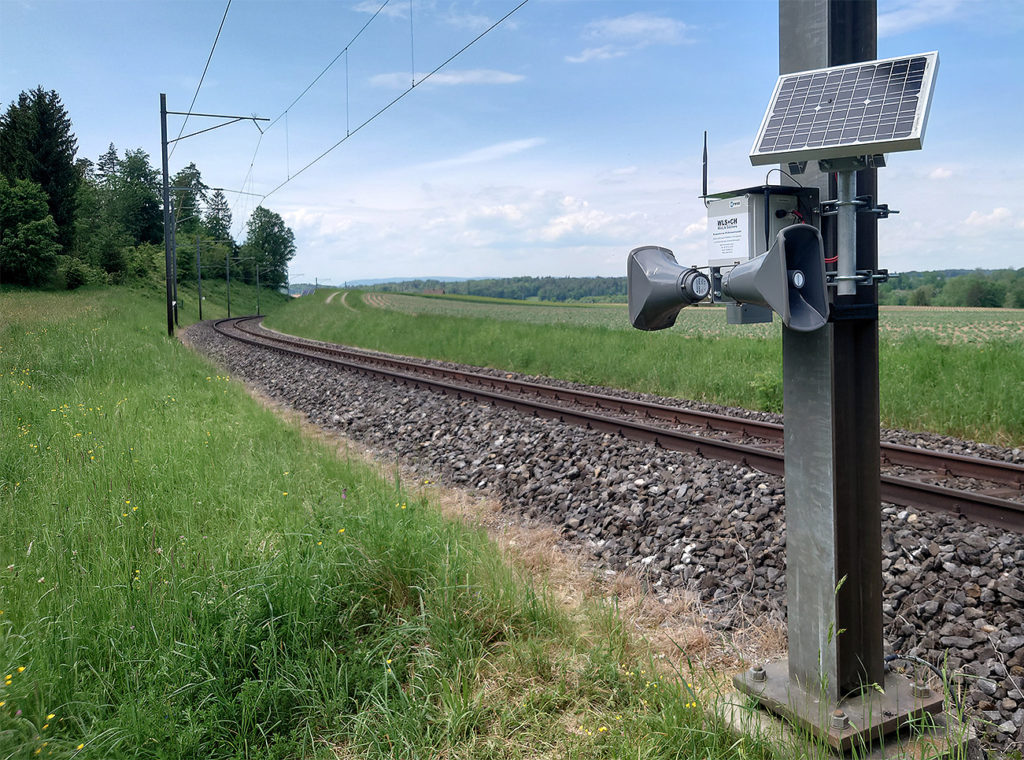Development of a bioacoustic wildlife warning system for railways
On certain sections of the railway network, so-called hotspots, collisions with wildlife frequently occur. Due to the landscape, curvy tracks and where wildlife migration axes cross railway lines, there is a particularly high potential for danger. Most wild animals cannot instinctively recognise the danger presented by an approaching train. In order to make rail traffic safer for both wildlife and SBB, measures are needed that reduce wildlife accidents on these sections of track. The aim is to develop a bioacoustic wildlife warning system and to document and analyse its effects using thermal imaging video cameras. In the first year of the study, the initial situation without a warning system is recorded in order to find out when and where which animal species cross the railway line. The thermal imaging videos can also be used to make statements about the behaviour of the animals in the area of the railway tracks.

Thermal images of a deer and a herd of wild boar crossing the tracks.
The bioacoustic wildlife warning system will be installed in the second year of the study and its effectiveness subsequently evaluated. The system will consist of loudspeakers installed along the track. Sensors will be located on both sides of the section to detect approaching trains. They will send a signal to the loudspeakers to trigger a bioacoustic alarm before the train passes. The bioacoustic alarm involves species-specific sounds and warning signals. The animals are thus made aware of an imminent danger “in their own language” and have enough time to move away from the danger zone.

